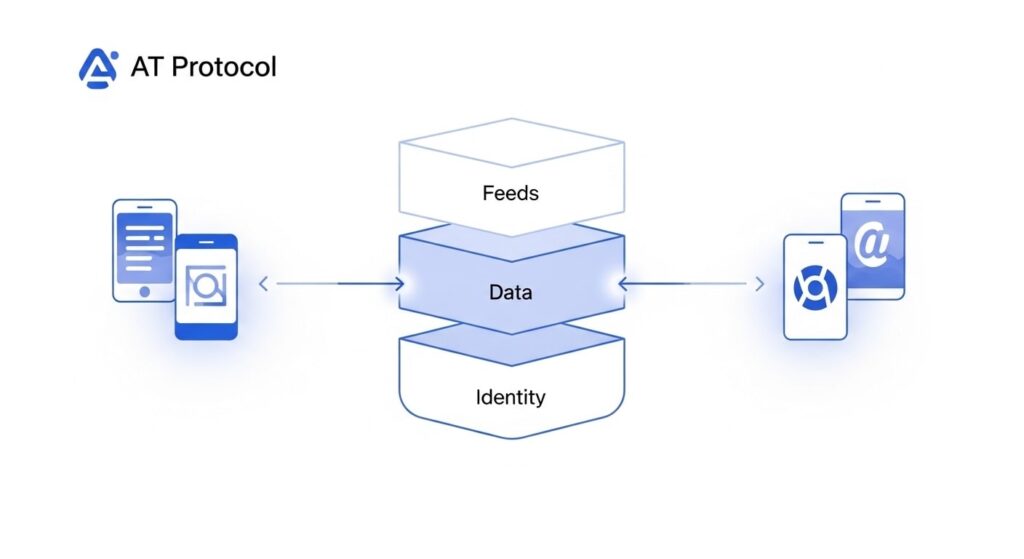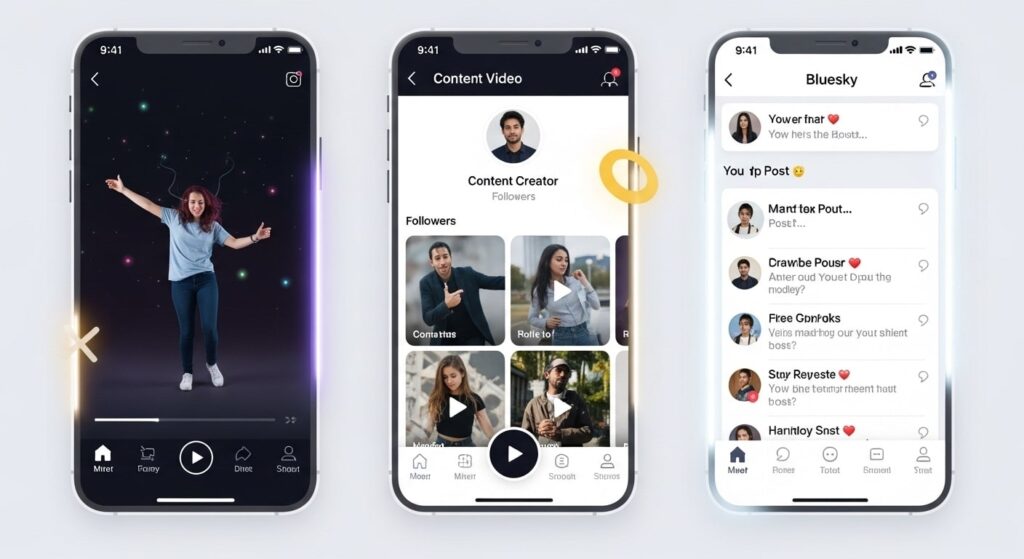Mark Cuban has publicly offered to fund a TikTok replacement built on Bluesky’s AT Protocol. That bet-backed already by early investment in Skylight-underscores a broader shift toward decentralized, user-controlled short-form video platforms. Here’s what Cuban’s move means for creators, developers, and the future of social media.
- The TikTok-Alternative Moment
- Who Is Mark Cuban – and Why His Backing Matters
- What Is the AT Protocol – The Tech Underpinning the Idea
- Why Now? The TikTok Problem and an Opening for Competitors
- Skylight – The Early Proof-Point
- The Decentralized Advantage – What Users and Creators Gain
- Industry Impact & Market Trends
- Real Challenges – Why success is not guaranteed
- The Road Ahead – What Cuban’s Move Could Trigger
- The Start of Something Bigger
- How creators, developers and users can participate
The TikTok-Alternative Moment
With TikTok facing regulatory pressure and repeated talk of bans in major markets, entrepreneurs and creators are hunting for viable alternatives. Billionaire investor Mark Cuban publicly offered to back a TikTok-style app built on Bluesky’s open AT Protocol, signaling more than a funding opportunity: it’s a push toward decentralized social experiences where users control data and algorithms.
Who Is Mark Cuban – and Why His Backing Matters
Cuban isn’t a casual angel investor. He’s known for active tech investing, high-profile startup support, and public evangelism about platforms that give users better control. In January 2025 he posted a call to action offering to fund teams that could build a TikTok alternative on the AT Protocol; by spring he’d moved from promise to backing at least one startup in that space. His name brings capital, media attention, and instant credibility to any platform trying to scale quickly.
What Is the AT Protocol – The Tech Underpinning the Idea

The AT Protocol (ATProto) is an open, decentralized standard designed for social applications. In plain terms, it separates identity, content, and discovery from any single app so users can take their profiles, follows, and posts between compliant apps. Key technical building blocks include decentralized identities (DIDs), data portability, and a federated model that enables cross-app interoperability. That structure makes it possible for different apps to share content and users while allowing individual apps to implement different moderation models, feeds, and monetization.
Why Now? The TikTok Problem and an Opening for Competitors
TikTok’s legal and political headaches have created urgency: creators worry about audience instability and monetization interruption, and users are exploring alternatives. Meanwhile, short-form video continues to dominate attention and ad spend-so a viable decentralized replacement would be commercially attractive. Centralized incumbents (Instagram Reels, YouTube Shorts) have scale, but they lock creators into single ecosystems and centralized algorithms—creating a gap ATProto-based apps aim to fill.
Skylight – The Early Proof-Point
One of the fastest examples of this approach is Skylight, a short-form video app built on AT Protocol. Launched in spring 2025, Skylight was co-founded by Tori White and Reed Hermeyer and secured pre-seed funding that included backing from Mark Cuban. The app was designed for easy onboarding with Bluesky credentials, and early releases prioritized creator tools (video editing, profile controls) plus community curation features. Since launch, Skylight has attracted early traction-downloads and uploads in the low hundreds of thousands-showing there is appetite for open, federated video apps.
The Decentralized Advantage – What Users and Creators Gain
- User data ownership & portability: creators keep control of their content and identity, moving between apps without rebuilding follower graphs.
- Algorithmic choice & transparency: apps can offer multiple feed algorithms or let users choose how their content is surfaced.
- Resilience: decentralized networks reduce the risk of shutdowns, single-company policy flips, or unilateral deplatforming.
- New creator economics: interoperable apps and alternative monetization schemes can surface different revenue models (tips, direct subscriptions, better revenue share).
These advantages are not theoretical-ATProto’s architecture was specifically designed to enable them.
Industry Impact & Market Trends
Bluesky and ATProto have grown fast as users search for alternatives to Big Tech gatekeepers. Reports throughout 2025 documented rapid user growth for ATProto apps and a rising developer ecosystem building on the standard. As short-form video remains the most engaged content type across platforms, decentralized apps that can offer creator-friendly economics and easy onboarding have a real shot at carving out meaningful market share.
Real Challenges – Why success is not guaranteed
- Network effects & onboarding: centralized platforms have massive audiences and polished UX. Persuading mainstream users to switch is difficult.
- Moderation at scale: decentralized networks must still deal with harmful content and differing legal regimes-coordinating moderation without central control is hard.
- UX and performance: building an experience that is as smooth as TikTok (fast uploads, low latency, discoverability) requires engineering focus and capital.
- Regulatory uncertainty: decentralized services complicate questions of liability, data protection, and compliance across jurisdictions.
Cuban’s funding helps address capital and attention gaps, but technical and social adoption hurdles remain sizeable.
The Road Ahead – What Cuban’s Move Could Trigger

Mark Cuban’s active support functions as a catalyst: it signals to other investors, developers, and creators that decentralized social apps are investable and urgent. If more teams build polished short-form video experiences on ATProto, we could see:
- An ecosystem of interoperable apps (competing UIs over a shared social graph).
- New creator monetization models that are portable across apps.
- A long-term shift away from single-company control toward more democratic, user-centered social spaces.
The Start of Something Bigger
Mark Cuban’s push to fund a TikTok alternative on Bluesky’s AT Protocol is important because it’s betting on architecture as much as an app. Rather than simply cloning TikTok’s features, this effort promotes a system where users own their identity and can choose how they see content. Skylight’s early traction proves the idea can work in practice; Cuban’s involvement gives the movement capital and visibility. For creators and developers, the message is clear: the next frontier of social media could be open, federated, and far more user-centric than what we’ve had so far.
How creators, developers and users can participate
Creators: experiment with ATProto apps (like Skylight and Bluesky), cross-post content, and learn about decentralized identity.
Developers: explore ATProto docs and SDKs to build interoperable apps or tools that improve onboarding and moderation. docs.bsky.app
Users: try out federated apps, follow creators across apps, and voice feedback-early community input shapes UX and policy.












